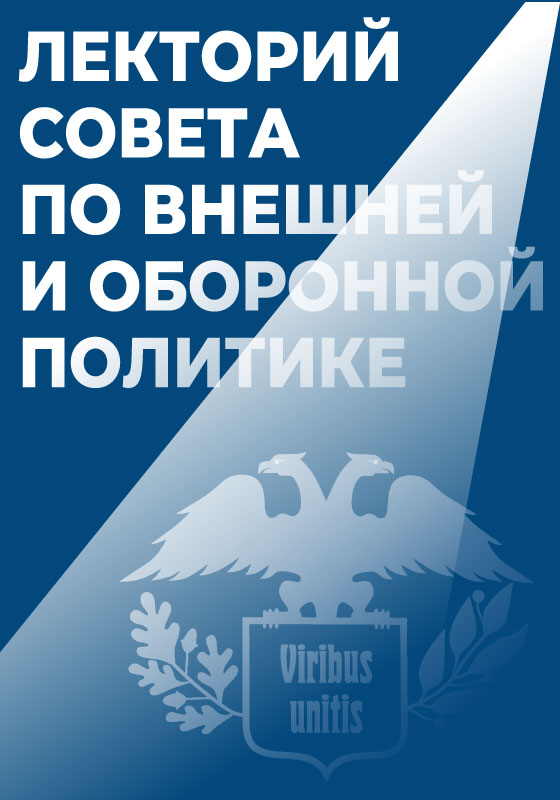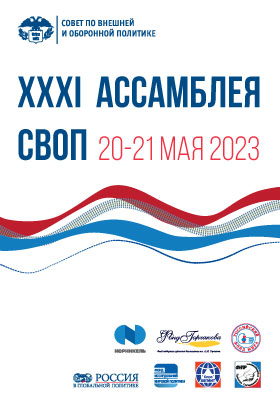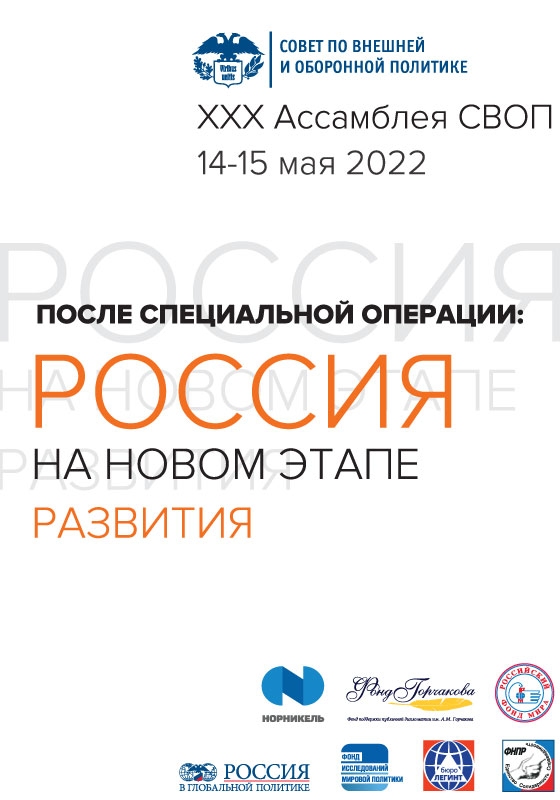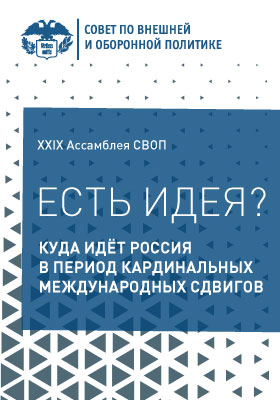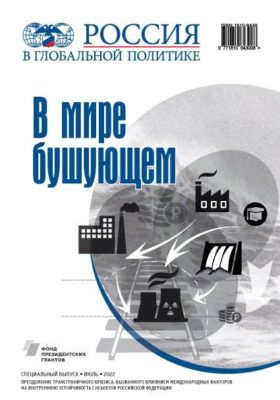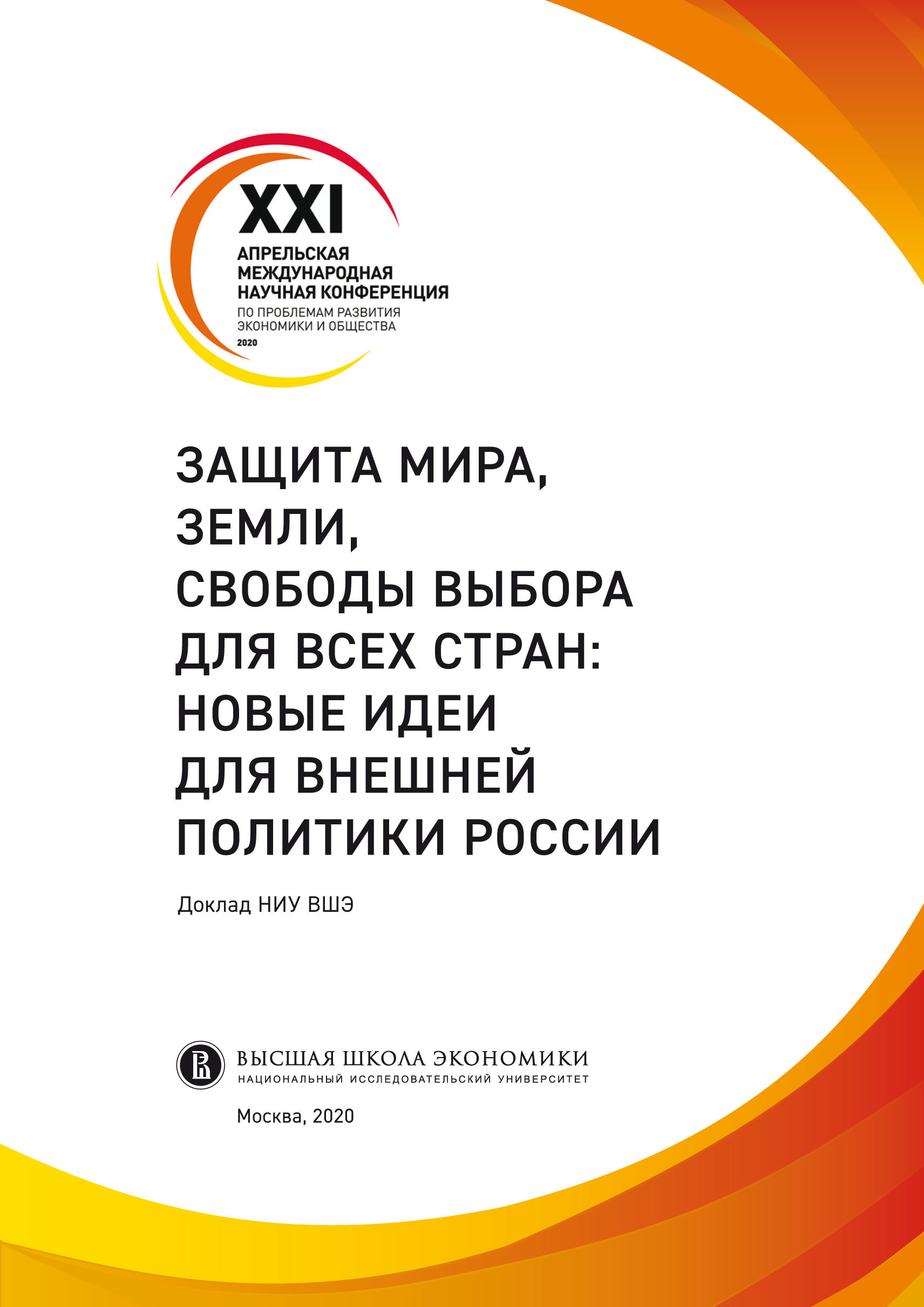How the Post-Cold War Era Ends
While only recently the West’s dominance looked absolute, now the roles of the teacher and the student, the leader and the straggler are no longer definitely assigned. Сompetition in interpreting reality, defining meanings, and translating values will increasingly grow.
Nearly twenty-five years separate two symbolic coincidences, each of which caused tectonic shifts in world politics. On December 8, 1991, a treaty signed in Belovezhye, Belarus, put an end to the Soviet Union; the following day the leaders of twelve Western European countries approved the Maastricht Treaty. On June 23, 2016, a majority of voters in the United Kingdom chose to leave the European Union. Around the same time India and Pakistan signed memorandums in Tashkent, Uzbekistan, to join the conventions of the Shanghai Cooperation Organization, thus bringing its membership to almost a half of the world’s population.
But one must not simplify things. Brexit does not mean Europe’s decline. And yet it would be wrong to underestimate the importance of the changes presaging the rise of a Greater Eurasia.
GREATER EURASIA: LONG-TERM STRATEGIES AND SELF-ORGANIZATION
When I speak about Greater Eurasia, I mean the fundamental process of geopolitical and geoeconomic changes in Eurasia and the adjacent regions of Africa (or maybe even Africa as a whole). This article does not consider Greater Eurasia solely as a synonym to the Russian-Chinese strategic partnership, which attracts or may attract other countries. Greater Eurasia cannot be reduced to the notion of a heartland and the spatial factor cannot be the only determinant in ongoing changes. Certainly space is important, but in order to grasp the essence of current events one should consider history, multiple ways of global development, and alternatives to the processes, of which until recently there seemed to be none. Today some tendencies that surfaced in the 1990s and 2000s are gaining momentum, while certain aspects of globalization associated with the triumph of the post-bipolar world order are withering away.
One of the key conditions for the emergence of a Greater Eurasia is the strengthening of semi-peripheral and peripheral countries that have been sailing with the fair wind of globalization and catching up with developed countries. Within a short period of time in modern history when globalization seemed to be offering benefits to all, a number of non-Western states sought international legal personality (independence of action on the international stage)—from countries producing raw materials to those claiming to have taken a leap into a post-industrial era. But as we all know, this Belle Époque ended abruptly in 2008.
The crisis of 2008 clearly showed that globalization—understood as the global triumph of the liberal politico-economic model—was faltering. All of a sudden it turned out that in order to retain its dominance, the West needed to reverse many of the processes it had launched previously. In fact, China was very successful in dealing with the hardships of the crisis; not only did it consolidate its status as the world’s number two economy, but it also announced its global ambitions. China did so after it had extracted everything it could from its export-oriented growth strategy. The shift in economic policy coincided with the ascent of a new generation of leaders like Xi Jinping and Li Keqiang. Their names are now associated with reorienting the Chinese economy to domestic demand, structural reforms, correcting disproportions, and stimulating innovative activities.
Xi’s strategic initiative “One Belt, One Road” is unparalleled in scale and outreach. For the first time since the voyages of Vasco da Gama, a country is trying to build economic ties from East to West. China’s attempts to project its economic power and create a dense network of communication, economic, and trade ties between major Eurasian markets is often construed as a sign of self-interest aimed at tapping the potential of both neighboring and distant countries for the sake of its own development. Naturally China will not take steps that could harm its interests, but the Chinese culture of political administration committed to long-term strategic planning goes further and seeks to create favorable conditions for the prosperity of the country. The stability and wellbeing of the countries willing to service Chinese interests are requisite for that.
The “One Belt, One Road” initiative will usher in a new kind of competition between countries contending for Chinese investments and loans, and those that want to host transport infrastructure to secure the unity of a Greater Eurasia. But what is even more important is that the process China has launched is acquiring its own inner logic, and other countries are doubling their efforts to build their own logistic chains.
A clear example is accelerated work to create a North-South transport corridor that will link Russia with Iran, and eventually with India via Azerbaijan. The project has engendered a trilateral strategic partnership between Russia, Iran, and Azerbaijan. In fact, Pan-Eurasian transport projects increase competition among corporate players. For example, investors from the German Initiative consortium offer financial support for the construction of a high-speed railway from Moscow to Kazan (a section of the future transcontinental railroad between the capitals of China and Russia) as an alternative to Chinese funding. Desiring to keep China from seizing the initiative completely, the Japanese government has come forward with a new approach to the territorial dispute with Russia, offering broader cooperation to develop energy and transport infrastructure in the Russian Far East.
The development of Greater Eurasia is beginning to look like a process of self-organization. Premises for such development emerged a long time ago, but there were no proper conditions until now. However, some factors have had a negative or destabilizing effect, preventing Greater Eurasia from becoming an independent key subsystem in the emerging new world order.
GREATER EURASIA VS. OCEANIA?
One such factor is the U.S. policy of containment along the gigantic external perimeter of China and Russia. Whether intentionally or not, by pushing NATO towards Russia’s western border and reinforcing military alliances in the Pacific, the U.S. is bringing Russia and China closer together in how they see U.S. strategic goals; thus encouraging closer military-political coordination between them. However, many countries along the lines of confrontation find themselves in a difficult situation because a more active role in building Greater Eurasia could serve their national interests much better. Yet they have to match, and more and more often subordinate, their aspirations to U.S. military-strategic interests.
One example is South Korea, which has agreed to host a THAAD antimissile system. According to official statements made by the U.S. and South Korea, the system will be deployed as a response to the nuclear threat from North Korea. However, South Korea will have no control over the system’s infrastructure and U.S. commanders will make all the decisions. The deployment of such a system on the Korean Peninsula will make it possible for the U.S. to degrade the effectiveness of nuclear missile capabilities in China and, to a much lesser extent, in Russia. It is not surprising that initial reactions from Russia and China were quite painful. South Korea has become engaged in the strategy of containment with regard to China and Russia, even though its long-term interests could best be served by making maximum use of the opportunities Greater Eurasia can offer. South Korea will have to embark on a long search for a median line between preserving its security alliance with the U.S. and tapping the potential of transcontinental cooperation and division of labor.
If the U.S. continues its confrontation with China and Russia under Trump, there will most likely be new attempts to crank up social and ethnic tensions in countries that are important to Russia or China. The biggest bet will once again be placed on global trade and U.S. attempts to retain its dominance after the failure of the globalization model in 2008. The trend towards liberalization in global trade has given way to a new generation of trade and economic groupings, the creation of which is necessitated not only by market sensibility, but also by geostrategic interests. NATO and different U.S.-led formats of military-political interaction in the Asia-Pacific region can be viewed as some sort of power “bonds” in the zone of American economic dominance. If U.S. strategy is fully realized, George Orwell’s Oceania will become a reality, at least in terms of control over vast territories from one center.
But one must not oversimplify the situation. Presenting the future system of international relations as a binary opposition between heartland and rimland, as a space of democracy and a space of autocracy, would be no more than an artificial framework used to solve specific tasks. Yet such a system would hardly be capable of factoring in all the complexity and diversity of relations between different actors in the changing world order. A truncated perception like this would only intensify centripetal tendencies and strengthen the forces that benefit from new dividing lines and exaggerated contradictions. The danger lies not only in distortion per se, but also in the fact that, as the Thomas theorem suggests, the perception of such a picture of the world as real will have real consequences.
Confrontation between the U.S., one the one hand, and China and Russia, on the other, is already a fact of life, but hard power and economic power will gradually lose their relevance, and the two largest Eurasian powers will try to avoid forming a military-political alliance. However, competition in interpreting reality, defining meanings, and translating values will play an increasingly growing role. While only recently the West’s dominance in these fields looked absolute, now it has become clear that in discussions on meanings and values the roles of the teacher and the student, the leader and the straggler, are no longer definitely assigned to certain nations and socio-political models.
EURASIA’S WESTERN PENINSULA
Discussions on the mixture of changes facilitating the emergence and development of Greater Eurasia inevitably raise questions about Europe’s role in this new reality. If Greater Eurasia is considered within the geostrategic context of Chinese leaders, then it is easy to see that the “One Belt, One Road” initiative is designed to build multiple links with Europe.
Brexit has made it obvious to everyone (even European integration enthusiasts) that the European Union and Europe are not the same thing. One may assume that even before its official exit from the European Union, Great Britain will participate in multilateral talks on the Transatlantic Trade and Investment Partnership as a party in its own right. Great Britain may gain more maneuvering room for some time and diversify its policy, finding space for Greater Eurasia as well. As it leaves united Europe, Great Britain will try to secure the most advantageous position for itself in the world economy.
Once Great Britain is out, the EU will quickly limit its enlargement. Overstrain will erect hurdles on the way of enlargement into the post-Soviet space. There is no guarantee that other countries will not want to follow the British example.
Although Germany will dominate Europe after Brexit, this does not mean that the European leader can impose its own scenario of deeper integration on the other 26 member states. It is more likely that the EU will regroup and reevaluate integration processes to return to the Europe of nation states. The level of foreign-policy coordination will change and a new space will emerge for differentiated interaction between countries and external actors. The EU will become more porous and more flexible in establishing numerous and multilevel contacts and ties with state and non-state actors in a Greater Eurasia. For example, one can imagine the European Union, the U.S., Canada, and Great Britain establishing a common free trade regime (TTIP) and sharing military-political obligations (NATO), but at the same time becoming increasingly engaged in different forms of interaction with Greater Eurasia at the micro- and meso-levels.
THE REVERSE SIDE OF EURASIA
The most dissimilar factors have begun to act synergistically, strengthening mutual transcontinental bonds, even though in many instances this can have a negative effect and produce high risks and political turbulence.
We can see processes intensifying that thousands of years ago made people in European centers of civilization realize that their prosperous towns and provinces were no more than the fringes of a gigantic ecumene and that outlanders could come pouring in at any moment. In today’s Europe problems related to migration and co-existence of the local population and migrants from Asia and Africa date back to colonial times and are rooted in a decades-long liberal immigration policy. It was a truly dramatic moment when it became clear that migrants from Muslim-majority countries do not fully integrate into the new society, but form enclaves with an alien culture instead of a cohesive community. Migrant communities in European countries keep their own religious and cultural identity, and in some instances their ties with the home countries are much stronger than those with the host ones. The information and communications revolution has made many migrant communities more resistant to attempts to integrate them into the new environment and makes it possible for them not only to communicate with their faraway relatives and friends, but also remain tightly attached to their sociocultural realities. When such enclaves grow into a dense network of neighborhoods off-limits to the native population (there are about 800 such areas in France alone), multiculturalism becomes impossible.
The failure of multiculturalism and ethno-demographic dynamics in EU countries irreversibly tie Europe to the Muslim part of Greater Eurasia. However Western political elites have succeeded quite well in unleashing the destabilizing potential that has accumulated in Middle Eastern countries. All obstacles to the growth of radical Islamism were consistently removed—from the overthrow of Saddam Hussein to support for the Arab Spring—sending a large region adjacent to Europe into chaos. Terrorist acts in Europe and the biggest migration crisis since World War II clearly showed that the turbulence in the Arab world was beginning to spread into prosperous Europe, changing its understanding of domestic security and messing up its customary electoral patterns. These were followed by events that accelerated the transformation of geopolitical reality in the Eastern Mediterranean and Eastern Europe.
In 2015-2016, two of the three countries situated both in Asia and Europe took steps that confused the West. For all the difference in their goals, both Russia and Turkey sought to show that they held the key to the Syrian conflict, or at least could regulate instability caused by the destruction of statehood in Syria and Iraq. In fact, the participation of Russia and Turkey in the Syrian conflict prompted EU countries to become immersed in the Eurasian context.
By becoming involved in the Syrian conflict on the side of Bashar al-Assad, Russia showed that it could not only act effectively on several theaters at the same time, but could also tie together all conflicts that European countries considered isolated. Although the Kremlin’s Syrian gambit did not lead to a primitive “Levant for Donbass” swap (which was never the point), it helped erode the anti-Russian orthodoxy and revealed the real price of the sanctions. Now the West has to accept Russia as a key partner in dealing with the threats posed by Islamic fundamentalism and the destabilization of Middle Eastern countries.
The objective reason for Turkey’s involvement in the Syrian conflict is security problems, Kurdish separatism, and threats to vital national interests. But these factors were magnified immensely by President Erdogan’s neo-Ottoman ambitions. The situation was further compounded by the internal political confrontation, which culminated in a coup attempt in July 2016. The Turkish leader’s maneuvering during the Syrian conflict was especially risky. Erdogan readily raised the stakes, but only to achieve temporary success, after which Turkey’s position became even worse. At a critical moment during the migration crisis, Erdogan essentially tried to dictate his conditions to Brussels and Berlin, taking advantage of a position that allowed Turkey to regulate the intensity and scale of refugee flows. Baffled European bureaucrats and EU leaders made a deal with Turkey, which Amnesty International described as “a dark day for the Refugee Convention, a dark day for Europe and a dark day for humanity.” Turkey had obviously overdone it, and its apparent rapport with Brussels quickly turned into mutual frustration and estrangement. And that meant almost total political isolation, given the tense Turkish-U.S. relations, a breakup with Israel, rivalry with Iran, and confrontation with Russia.
Relations between Russia and Turkey remained in deep crisis when the Turkish Air Force shot down a Russian Su-24 aircraft. The two countries were about to plunge into a long-term confrontation that could have weakened both of them. The realization of this threat helped the two countries find ways to overcome their antagonism.
The revived partnership between Russia and Turkey can substantially influence the development of a Greater Eurasia and adjust ongoing geopolitical transformations. But there are certain restricting factors to take into account as well. These include remaining differences over Syria, Erdogan’s growing personal power, and the overall internal tension caused by the rearrangement of the political landscape in Turkey after the failed coup attempt.
THE SHANGHAI COOPERATION ORGANIZATION AS AN INCUBATOR
The SCO would be the best choice as an international organization capable of streamlining the emergence and development of Greater Eurasia. The admission of India and Pakistan to the SCO will most likely lead to qualitative changes in the Organization’s mission and regional agenda. Rivalry between these two countries can block some initiatives and adversely affect decisions adopted by consensus. There is a risk that the current institutional format will not be able to cope with the strain of speedy enlargement and the creation of a new structure for larger membership and future tasks may drag on. Trying to implement less ambitious but more realistic scenarios could be a solution.
The SCO needs greater flexibility to increase its role as a platform for dialogue and regular interaction between states, the number of which keeps growing. But while doing so it will have to avoid the temptation of prematurely drafting universal documents, like the Helsinki Final Act of 1975; nor should the SCO turn into a forum for rhetorical exercises on transcontinental cooperation. While preserving the achievements made over its 15 years of existence, the SCO could act as an incubator for a wide range of agreements and initiatives, covering such issues as security, trade, environmental problems, and cultural, scientific and technical cooperation. It should move forward gradually. As it does so, the SCO will see a network of formalized ties, partners, and institutions emerging at the regional, interregional, and trans-regional levels, and eventually across Greater Eurasia as whole. Only after all of these interim steps have been completed would it be reasonable to begin a substantive discussion about the formation of a community of Greater Eurasia.
A MINOR EURASIA WITHIN A GREATER EURASIA
Once a very promising integration project in the post-Soviet space, the development of the Eurasian Economic Union has not always been progressive. One reason is Russia’s natural dominance, resulting in a high degree of dependence by other EEU members on the state of the Russian economy. The crisis of Russia’s economic model coupled with Western sanctions and falling oil prices has caused its EEU partners to sustain serious economic losses. Attempts by Belarus and Kazakhstan to minimize those costs (or, whenever possible, reap benefits from U.S. and EU restrictions against Russia and its countermeasures) are as much egoistic as they are rational.
The idea of connecting the Eurasian economic integration process with China’s Silk Road Economic Belt initiative was partly defensive and designed to ease the tension that would otherwise have developed inevitably amid unregulated competition between further efforts to develop the EEU and Chinese activity in the post-Soviet space. Having recognized China’s role and declared the possibility of their coordinated participation in its projects, the EEU member states strengthened the positions of their association.
The EEU’s further evolution has become increasingly influenced by the multidirectional policy of such countries as Kazakhstan and Belarus. The former is facing a period of uncertainty due to the unavoidable change of its leader and possible instability during the handover of power in the country. The terrorist attack in Aktobe in June 2016 badly damaged Kazakhstan’s image as a haven of stability and order in Central Asia. Regardless of whether those events were a result of the struggle between elites or Islamic extremist activities, it is clear that the ongoing processes in Kazakhstan are a long-term problem which Russia will have to face.
Both the ruling circles and opponents of President Nazarbayev criticize Kazakh membership in the EEU and, in particular, its economic troubles (not all of them are related to Eurasian integration). Nazarbayev, however, does not use this criticism of Eurasian integration institutions and mechanisms to weaken them, but rather to strengthen Kazakhstan’s positions both in the EEU and outside it. Apparently, Nazarbayev’s vision of a Greater Eurasia is not fully identical to that of Russia. He emphasizes securing the best possible positions for Kazakhstan in a new configuration that may be formed by China, the European Union, Russia, and the Islamic world as its key players. Nazarbayev’s proposal put forth at the St. Petersburg Economic Forum to integrate the European and Eurasian Unions clearly bears this out. At first glance, the proposal takes the idea of a Greater Eurasia to its logical conclusion. But it is Kazakhstan that can benefit the most from the institutionalization of the dialogue between the EU and the EEU, without actually expecting the two projects to be really integrated. In fact, in the current situation (even after Brexit) one can hardly hope for anything more than Brussels’ invitation to the EEU countries to accept EU norms and rules without being able to play any part in their development. The “integration of integration” scenario is no more than wishful thinking, premature implementation of such a plan may have dangerous consequences.
The Kazakh leadership’s call for dovetailing the stalled Eurasian integration to European standards may be an attempt to overcome the discomfort of being in the EEU. But one cannot rule out that the Kazakh leadership may be hesitating between “improving” the EEU (for example, by pressing for a reduction in the list of exemptions from the free trade regime) and steps that may erode the project. The latter include Kazakhstan’s decision to accept the WTO tariff policy, which differs from the common customs tariffs approved by all EEU states.
Kazakhstan has achieved many impressive results through economic cooperation with China as part of the Silk Road Economic Belt initiative. As of the beginning of 2016, Kazakhstan was ahead of Russia in terms of cooperation with China and was carrying out more than 50 joint industrial and logistic projects worth over $24 billion. However, some of those projects will be futile without Russian participation, such as the Western Europe-Western China road, which ends precisely on the Russian-Kazakh border. But Kazakhstan is involved in the construction of routes bypassing Russia via the Caspian Sea and the South Caucasus. Kazakhstan is seeking to turn the country into a major transport and logistic hub, and this is where the interests of Russia and Kazakhstan diverge. Nevertheless, if transport infrastructure is developed further, cooperation between China, Russia, and Kazakhstan appears to be very promising and may only strengthen the positions of the latter two if they pursue a policy coordinated within the EEU.
The EEU’s institutional weaknesses have been discussed many times. The main mechanism for counterbalancing Russia’s economic dominance in the EEU is the right to veto and the principle of equality in the Eurasian Economic Commission (EEC). But this principle does not apply to the financial contributions member states make to this institution, the costs of which have increased exponentially over the past several years. The EEC has very limited possibilities as a supranational body and may not even make proposals for further development of cooperation within the EEU. It is not surprising, therefore, that the EEC plays an increasingly small role compared to national institutions even in Russia. The consensus trap seems to have closed, and the admission of Armenia and Kyrgyzstan to the EEU highlighted institutional efficiency problems. Changes in the decision-making mechanism (which will have to be made sooner or later) may cause a serious crisis in relations between EEU countries. To avoid that, the EEU should redefine its mission and the purpose of its institutions, turning them into a collective mechanism allowing member states to fit into the emerging network of ties within a Greater Eurasia in the best possible way.
A new mission of EEU institutions could develop a common position for all member states on issues concerning various integration initiatives, and trade and economic cooperation formats both in Eurasia and worldwide. The Silk Road Economic Belt initiative is a serious challenge to EEU countries. But if Russia succeeds in convincing its EEU partners to work out a common position on China’s economic development strategy for Eurasia, then this will be a fundamental achievement. The stakes are so high that a revision of the EEU institutional model will be justified.
SOME CONCLUSIONS REGARDING RUSSIA
China is sending a strong signal for the need to accelerate changes in Greater Eurasia. Russia has to respond to these transformations and can influence them significantly. The problem is that regional and global contradictions are also growing and becoming increasingly complex, affecting not only security, economic, trade and financial spheres, but also information flows and virtual space. Russia may be one of those who will benefit from building a Greater Eurasia. At the same time, there is a danger of turning into the main magnet for risks and threats in this process.
Strategic partnership with China is becoming a key factor for Russia. Bilateral cooperation should not develop into an official military-political alliance directed against the U.S. or any other country, but China and Russia should act jointly to dismantle the U.S.-centric world order and build a fairer and safer system of international relations in Eurasia and the world. Russia will not be able to avoid recognizing China’s leadership, but it can preserve equality and the freedom to maneuver in building strategic partnerships with third countries.
By developing strategic partnership or constructive dialogue with India, Vietnam, Iran, Israel, and Egypt, as well as (under certain conditions) with Turkey, Saudi Arabia, Japan, and South Korea, Russia will help make Greater Eurasia a more balanced system with several centers of power. Russia should not only seek to build a balance of power that will serve its own purposes, but it should also try to expand the circle of countries with which it can jointly solve tasks on the basis of trust and mutual interests.
Russia will also have to prepare its own institutions of influence in the post-Soviet space for integration into Greater Eurasia and, acting together with other allied states, make the EEU and the CSTO much more efficient and flexible. That is not an easy task. A lack of experience, insufficient expert support, and the inertia of previous relations will be a major hindrance. But there is no alternative to integrating the post-Soviet space into Greater Eurasia, and it is better to lead this process rather than fight it. If these efforts proceed in unison with development processes ensuring faster and better economic growth in third countries, then the risks will turn into mutual gains.
Naturally, Russia will remain a country of European culture. But there is no need to carve out a new window to Europe. Just recently, leading European countries scornfully dismissed the idea of a Greater Europe “from Lisbon to Vladivostok.” Now Russia will have to join in the efforts to open up the shortest way to Europe for Asian economic giants, but acting solely as a transit country will hardly be sufficient. Russia can come up with its own, quite impressive, proposals including not only routes and logistic centers, raw materials, food, military and industrial products, and space technology, but also security. This is necessary as a protection against the sources of instability that are threatening not only old Europe, but also Asian centers of global economic growth. Russia’s contributions to the fight against Islamic terrorist networks and the liberation of parts of Syria and Iraq can be regarded as a kind of test for the role of sheriff in a Greater Eurasia. It would be reckless, of course, to claim such a role for itself alone. But if this burden is shared with other influential players in Greater Eurasia, the export of security can be quite profitable, both economically and politically.
As far as the European Union is concerned, Russia cannot do much more than show Europeans that some of the persistent problems that trouble Brussels can be solved within a Greater Eurasia. There is no need to try and reach universal agreements to regulate the entire range of relations between the EU and the majority of post-Soviet countries (EEU), let alone other parts of Greater Eurasia. The EU is at a crossroads and needs time to choose the right direction for its own transformation.
Russia has the necessary experience and possibilities to deal with the risks arising during the emergence and development of a Greater Eurasia. One of the keys to success is the optimum division of labor as part of the strategic partnership with China and other Asian and African countries, and eventually with leading European states. Another key is sustainable economic growth, political stability, modernization of public administration, and the effective operation of public institutions. The experience of China and other Asian countries will be very useful as a working model for economic development, but ultimately it is the joint efforts of the government and society that will secure a worthy place for Russia in Greater Eurasia and the world.




